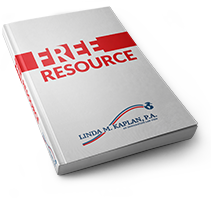Let Your Loved Ones Open the Door for Your Permanent Residency
One of the most effective ways to attain permanent residency in the US is through a family-based petition. When you have loved ones already living as citizens or permanent residents in the United States, this may allow you to qualify for a Green Card and eventually even citizenship.
Family Sponsored Preferences for Permanent Residence
When applying for family based permanent residence, USCIS approves people based on their relationship to the family member currently living in the US. There are two categories under which family-based permanent residency can be issued: Immediate Relatives and four levels of Preference Beneficiaries.
Immediate Relatives
Applications for permanent residency based on an immediate relative who is a US citizen are not subject to any quotas or limits, which is a significant advantage. In order to qualify, you must meet at least one of the following qualifications:
- Spouse and/or Widow(er) of a US Citizen
- Child of a US Citizen – The term “child” is defined in this case as an unmarried person who is under 21 years of age. The child may be a biological child, an adopted child (under some circumstances) or a stepchild who was less than 18 years of age at the time the biological child married the US citizen.
- Parent of a US Citizen – US Citizens 21 years of age or older may petition on behalf of their parents.
*Note for Marriages of Less Than Two Years*
Those who receive their residence based upon a marriage of less than two years duration will receive ‘conditional residence’ for two years and must file a petition for removal of conditions ninety days prior to the two years expiration date.
Additionally, under certain provisions of the Violence Against Women Act (VAWA) that amended the Immigration and Nationality Act (INA), a battered spouse, child, or parent of an abusive US citizen, or the battered spouse or child of a permanent resident may be able to file their own petition for permanent residency without their abuser’s knowledge. While this provision was included in the Violence Against Women Act, a battered spouse of any gender may qualify under this section of the law. Please contact the law office of Linda M Kaplan, PA for a confidential consultation to discuss your options.
Preference Categories
Those who don’t have an immediate relative in the US can still apply for permanent status, but there is a limit on the number of applicants that may be approved for residence each year, resulting in waiting lists for these categories. Those who apply will be approved based on the preference categories established by immigration law. These preference categories are as follows:
- First Preference (FB-1) – unmarried sons and daughters of US Citizens who are 21 years of age or older.
- Second Preference – (FB-2 a and FB-2b)
- Spouses and children of lawful permanent residents and unmarried sons and daughters of lawful permanent residents.
- Third Preference FB-3 – married sons and daughters of US Citizens.
- Fourth Preference FB-4– Siblings and half-siblings of US Citizens who are at least 21 years of age.
Spouses and children of those who qualify under one of the preference categories may qualify for residence as a derivative beneficiary.
Child Status Protection Act
The Child Status Protection Act amended the Immigration Nationality Act by changing who qualifies as a child for purposes of immigration. This permits certain beneficiaries to retain classification as a “child,” even if he or she has reached the age of 21.
A “child” is defined as an individual who is unmarried and under the age of 21. Before CSPA took effect on August 6, 2002, a beneficiary who turned 21 at any time prior to receiving permanent residence could not be considered a child for immigration purposes. This situation is described as “aging out.” Congress recognized that many beneficiaries were aging out because of large backlogs and long processing times for visa petitions. CSPA is designed to protect a beneficiary’s immigration classification as a child when he or she ages out due to excessive processing times. CSPA can protect “child” status for family-based immigrants, employment-based immigrants, and some humanitarian program immigrants (refugees, asylees, VAWA).
Congress imposes limits on the number of visas approved for each of the preference categories. Once the annual limit has been reached, applicants are placed on a “waiting list.” The U.S. Department of State provides a monthly visa bulletin that advises us of the visa availability for that month. The visa bulletin can also be used to make rough estimates of the waiting time, if any, for each preference category. If you wish to see the current visa bulletin this may be found by visiting the U.S. Department of State’s Visa Bulletin page, which can be found at: https://travel.state.gov/content/visas/en/law-and-policy/bulletin.html.
Nonimmigrant Visas leading to Family-Based Permanent Residency
There are several visa options available to help you bring a loved one to the US as a nonimmigrant prior to petitioning for permanent residency. These are known as “K Visas,” and our firm is able to assist the following individuals with such petitions:
- K-1 – Fiancé(e)s of a US Citizen
- K-2 – Minor child of a Fiancé(e)
- K-3 – Spouse of a U.S. Citizen
- K-4 – Stepchild of a U.S. Citizen
All K nonimmigrants are required to file an “Application to Register Permanent Residence and Adjust Status,” after arrival to adjust status as a permanent resident of the United States. K-1 visa holders must marry the US citizen within 90 days of entry to the US.
K nonimmigrants may only adjust status as a permanent resident through the same U.S. citizen (fiancé(e), spouse, or stepparent) that petitioned for them to receive their K visa status.
If you have questions or you are in need of guidance regarding a petition for family-based permanent residency, please contact the law office of Linda M. Kaplan, P.A. today.


